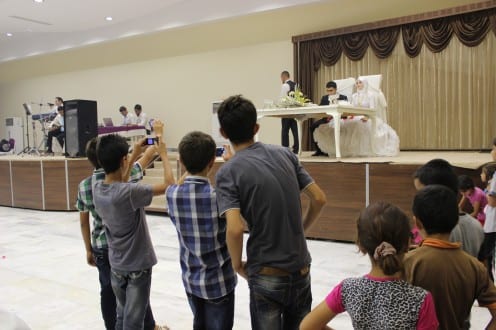Thinking of writing cultures
By Razvan Nicolescu, on 15 June 2014
This blog post will try to give just a short glimpse of what our collective work means and how we envisage doing it.
This May, the entire project team reunited in London. This came after roughly twelve months fieldwork for each of us. Imagine nine anthropologists (Elisabetta Costa, Nell Haynes, Tom McDonald, Daniel Miller, Razvan Nicolescu, Jolynna Sinanan, Juliano Spyer, Shriram Venkatraman, and Xinyuan Wang) sitting at the same table and each trying to talk in a way that would make sense for the rest of the team while also addressing very different individual issues and concerns. In a way, this task was very similar with one of the main underlying thoughts since the beginning of the project: how to make our ethnographies really comparable?
We started by structuring our individual presentations into themes and focused more on ‘what went wrong’ or ‘what we didn’t do’ rather than on the positive aspects of our fieldwork. We felt we needed this exercise, as on the one hand we identified common issues and workarounds and on the other hand the kind of feedback we each received was incredibly effective. This was also one occasion to realise how much we have done so far: tens of questionnaires, exploratory interviews, in-depth interviews, close work with local schools and in a few cases (Turkey, Trinidad, and India) with local Universities, gathering of specific quantitative and demographic data, and so on. Besides, each of us followed their individual research interest, updated on a monthly basis the research blog, and circulated inside the team a total of around 70,000 words in monthly reports.
Next, based on our continuous discussions we started to draw a list with the main preliminary insights of the project. We qualified as ‘insights’ the kind of information based on ethnographic evidence that, even if could be strongly relativized between all the nine sites, it is nevertheless essential in understanding the impact of social networking sites on our society. After a few rounds of refinement and clarifications we ended up with around thirty preliminary insights that we will begin to publish on this blog. The idea beyond this is that we recognize that the earlier we put our findings in the public domain and under critical scrutiny the more social science will benefit.
Then, we started to work on a list of tasks that we all have to do in the last three months of fieldwork. We ended up in defining 20 tasks, mostly qualitative, that respond to issues we overlooked so far or we decided collectively we have to have. Some of these are: we redrew parts of the in-depth interview grid, we defined a few common mechanisms to work on and to analyze the online material, and created a second short questionnaire to be done by the end of the fieldwork. Sometimes the endless debates on the various nuances and particular issues in each fieldsite had to be closed down by mechanisms such as democratic votes inside the project team: by voting, we collectively decided whether we will address that particular topic as a collective as part of the mandatory deliverables or it will remain to be further investigated by just some of us.
There are so many other things we worked on during this month and I do not have space to discuss here: gathering user generated content, producing short films on the main themes in each fieldsite, the course we’ll collectively teach at UCL/Anthropology in the second term of the next academic year, discussion on research ethics, methodologies, and data analysis, AAA conference this year, dissemination plan and our collective publications, as detailed here by Danny, the strategy for our online presence, and so on.
By the end of the month, when my colleagues also prepared their panel for the RAI conference on Anthropology and Photography, we all agreed that going through such an immense quantity of data and ideas, process, and plan our further common actions in a relatively short period of time was the real success.
 Close
Close
















